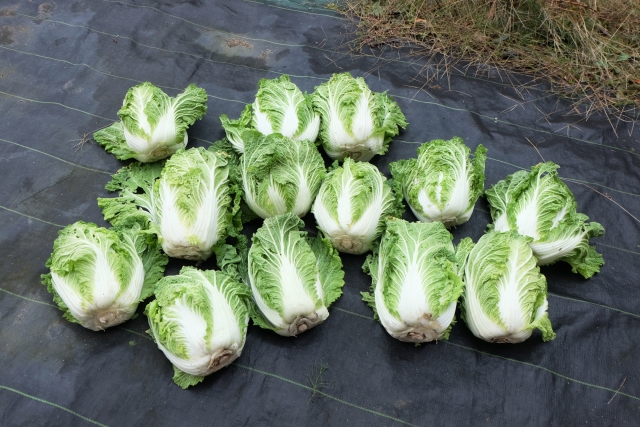Wombok Cabbage: A Versatile Asian Vegetable
Have you noticed how some prices seem to be skyrocketing lately? Interestingly, amidst all this, there’s a humble vegetable that remains surprisingly affordable: Wombok (Napa Cabbage) ! Now, some of you might be scratching your heads wondering, “What on Earth is Napa Cabbage?” Let me enlighten you!
Napa cabbage (Wombok), commonly used in Asian cuisine (especially in countries like Japan, Korea, and China), is a vegetable from the Brassicaceae family.
If you’re thinking, “I’ve never heard of it,” don’t worry – it tastes somewhat like regular cabbage, with a subtle flavor that’s perfect for a wide range of dishes.
One quick idea?
Toss it with some mayo and make your own coleslaw like a cabbage.
While it’s famously used for making kimchi, my personal favorite way to use wombok is in a pot dish – known as a ‘nabe’ in Japanese.

What is Nabe?
At its heart, Nabe is a communal hot pot dish, where various ingredients are simmered together in a flavorful broth. The term “Nabe” actually means “pot” in Japanese, but it’s also used to refer to the dish cooked inside it. It’s a quintessential winter staple in Japan, allowing family and friends to come together, cook, and dine all from a single vessel.
Key Ingredients
While the variety of Nabe is vast, some typical ingredients you might find include:
Proteins: Thinly sliced beef, pork, chicken, tofu, and seafood.
Vegetables: Mushrooms, Chinese cabbage, spinach, and green onions.
Others: Noodles (like udon or glass noodles) and dumplings.
I will show you a simplest recipe for a delightful Nabe with a miso flavor!

Easy Miso Nabe (Pot Dish)
Ingredients:
Napa cabbage (wombok): 1/4 of a head
Carrots: 1-2, thinly sliced
Mushrooms: 3-4, sliced
Green onion: 1, chopped
Bean sprouts: A handful (if available)
Thinly sliced pork: As much as you like
Ginger: 1 slice, chopped
Miso (fermented soybean paste): 2-3 table spoons
Water: 3-5 cups
Steps:
- Cut the wombok into 2-3 cm wide pieces. Prepare the carrots, green onions, mushrooms, and pork as mentioned in the ingredients.
- Add about 3-4 cups of water to a pot, followed by ginger, carrots, mushrooms, the white part of the Napa cabbage, and the pork. Cover with a lid and place on heat.
- If you feel the water is getting low during cooking, feel free to add more.
- Once the vegetables and meat are mostly cooked, and the wombok has reduced in volume, add the remaining part of the wombok and bean sprouts. Continue simmering.
- Once everything is fully cooked, stir in some miso paste. Voila! Your cabbage nabe is ready.
While traditionally, a broth (dashi) is prepared using kelp (kombu) or bonito flakes before adding the vegetables, I’ve skipped this step to keep things simple for those who may not have these ingredients on hand.
A fun tip: after enjoying the vegetables and meat, you can add cooked rice and an egg to the remaining soup, simmering it all together to make a comforting ‘porridge’.
So, next time you spot wombok at the grocery store, you’ll know exactly what to do!
Happy cooking!


